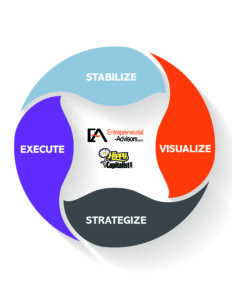Oftentimes, the individuals involved have worked their way up the ladder and are now in a place where they need to focus their time on the bigger picture: leading their teams and coaching their managers. This pivot of attention involves more responsibility and awareness, doesn’t provide the immediate gratification of solving a problem, and requires a different skillset than previous positions.
Frequently, when direct reports approach their manager with a challenge, the manager wants to solve the problem for them. As human beings, most of us want to help. We like to be needed, and if we can solve a problem for someone, it makes us feel good. I’d argue that, in many cases, this is the wrong direction. You may have solved an immediate issue, but you’re not empowering these people to problem solve on their own. We love to feel needed and right, yet this behavior can enable bad habits that create a codependency, which doesn’t allow for individual success.
Typically, this dependency starts off slowly; however, as time progresses, people begin realizing they can go to Jane, for example, because she’ll have the answer. Before you know it, Jane is spending the majority of her time solving issues for everyone else, eventually leaving her feeling resentful about others not doing their jobs. And she’s unable to do hers.
In this instance (and many others), a better approach would be to “act lazy”. Don’t solve issues for people; instead, help them figure out how to resolve problems by teaching them. Empower them! The reality is that this is harder and it typically goes against the grain for most people. To go Biblical on you (yep, I’m going there), “It’s better to teach a man to fish rather than to give a man a fish”. As seen with children, you can’t ride the bike for them, but you can help them learn how to ride the bike by supporting them. When they fall, you pick them up, dust them off, and encourage them to get back in the saddle.
This very technique can be applied to the practice of building leaders within your organization. Even if you can answer the question at the next team meeting, should you?
Some specific questions may look like:
- What do you think?
- How do you think you should approach it?
- What are some other options?
- Who else might know?
- What does a successful outcome look like?
- What’s the real issue?
- What can I do to help you solve this?
These are simply examples of some relevant questions to use with your teams and managers. Keep in mind that the goal is to get them to start thinking differently. It all starts with you. If you want the members of your company to grow, don’t solve their issues. Be lazy!
Do you have a habit of solving your team’s problems? Do you need to take a backseat, but don’t know where to start? Reach out to us today to learn how – we’re always here to help!

